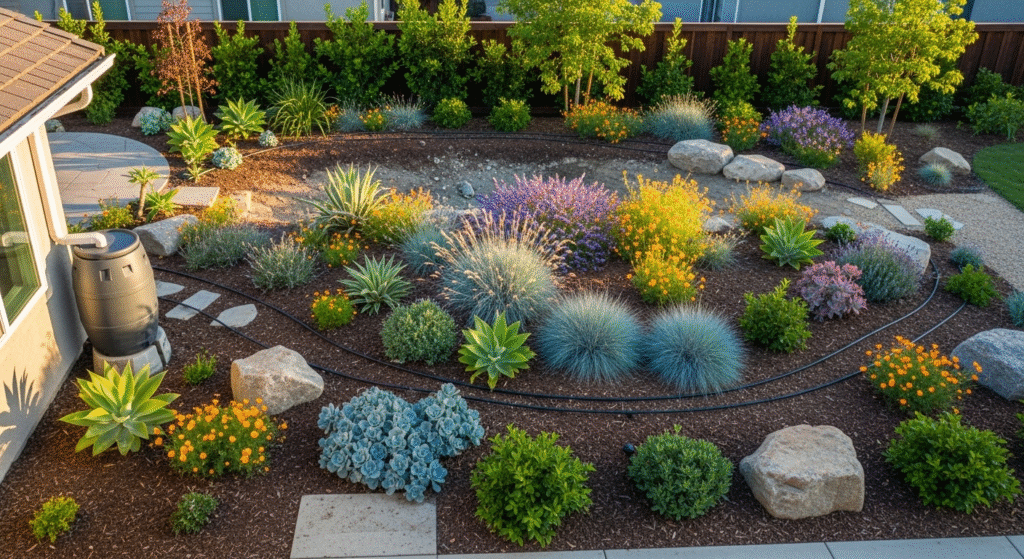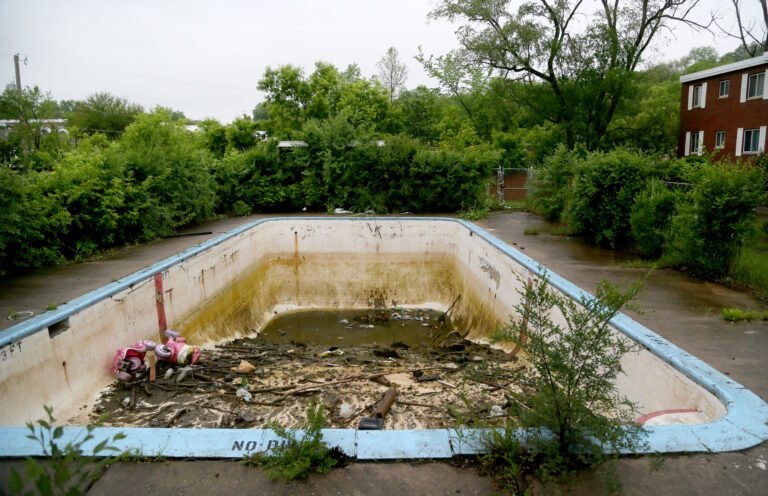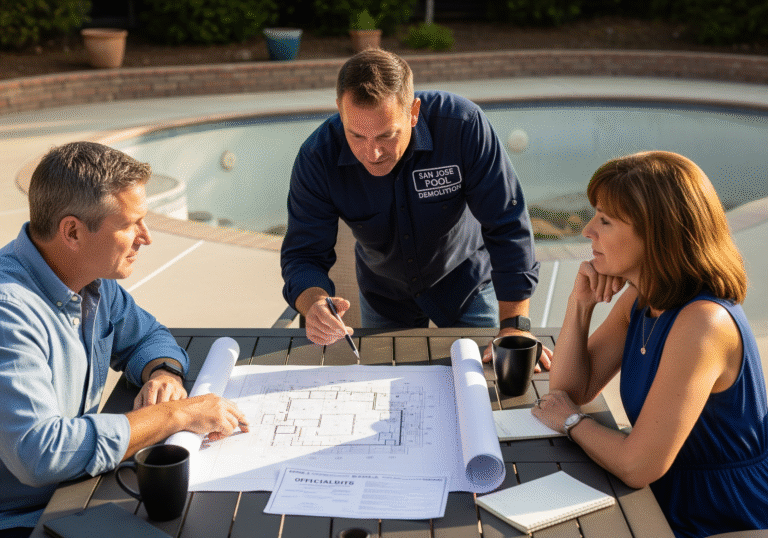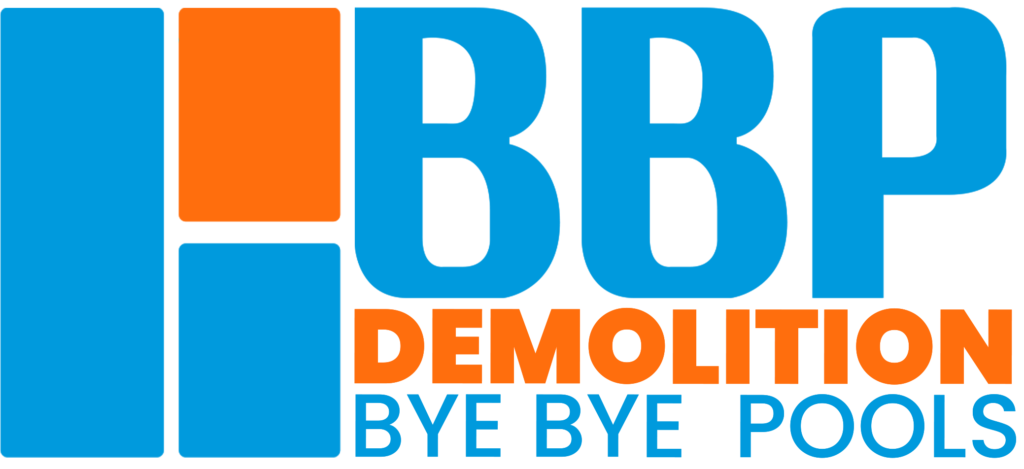Brilliant & Green: 5 Vital Eco-Friendly Pool Removal Tips
Did you know that swimming pools can lose tens of thousands of gallons of water annually through evaporation, leaks, and splash-out? In drought-prone regions like California, where water conservation is paramount, an unused or aging pool represents a significant drain on precious resources and your wallet. If you’re considering transforming your backyard, choosing an eco-friendly pool removal process isn’t just a responsible decision for the environment—it’s a smart investment in your property’s future and water independence. This extensive guide will equip you with vital eco-friendly pool removal tips for drought-prone areas, ensuring your demolition project minimizes its environmental footprint, maximizes resource efficiency, and paves the way for a more sustainable landscape. Ready to make a powerful positive impact on your home and community? Let’s explore how to remove your pool responsibly and sustainably!
Why Prioritize Eco-Friendly Pool Removal in Drought-Prone Areas?
The decision to remove a swimming pool is often multifaceted, stemming from rising maintenance costs, dwindling family use, or the desire to reimagine a backyard space. However, in regions perpetually challenged by water scarcity and increasing environmental awareness, the rationale for pool removal extends far beyond personal convenience. Embracing eco-friendly pool removal tips for drought-prone areas reflects a profound commitment to sustainable living and offers a cascade of benefits for both your property and the broader environment.
Crucial Water Conservation: More Than Just a Drop in the Bucket
The most immediate and impactful benefit of eco-friendly pool removal is the substantial reduction in water consumption. A typical residential pool loses between 0.25 to 0.5 inches of water per day to evaporation, equating to thousands of gallons annually. This doesn’t even account for leaks, filter backwashing, or the water needed for routine cleaning. By eliminating the pool, you permanently remove this demand, contributing directly and significantly to local water conservation efforts. This is an indisputable advantage, particularly in areas like Concord, CA, where water restrictions are a recurring reality. Choosing eco-friendly pool removal tips for drought-prone areas can free up your water bill for more essential uses.
Shrinking Your Carbon Footprint: Energy Savings Beyond the Pump
Pools are notorious energy hogs. The circulation pumps run for hours daily, consuming significant electricity. Pool heaters, whether gas or electric, demand substantial energy to maintain desired temperatures. Furthermore, the manufacturing, transportation, and disposal of pool chemicals and equipment contribute to industrial emissions. An eco-friendly pool removal strategy consciously aims to minimize these indirect carbon emissions throughout the demolition process itself, from efficient equipment use to responsible waste transport, making it one of the most effective eco-friendly pool removal tips for drought-prone areas.
Championing Waste Diversion and Recycling: Reimagining Resources
Traditional demolition often involves simply hauling concrete, rebar, and other construction waste directly to landfills, where they occupy valuable space and contribute to environmental degradation. A truly eco-friendly pool removal prioritizes the diversion of these materials from landfills through robust recycling and repurposing initiatives. Concrete can be crushed on-site or off-site and reused as aggregate for new construction projects or as foundational backfill. Steel rebar can be melted down and reformed, while old pool equipment (pumps, filters, heaters) can sometimes be refurbished, salvaged for parts, or properly recycled. This approach reduces landfill volume and lessens the demand for virgin raw materials, embodying the spirit of eco-friendly pool removal tips for drought-prone areas.
Fostering Healthier Soil and Future Landscape Vitality
The long-term chemical treatment of pool water can leach into surrounding soil, potentially impacting its health and fertility. Improper pool drainage during removal, or a lack of proper backfilling and compaction, can also lead to soil instability, poor drainage, and an unhealthy environment for future landscaping. An eco-friendly pool removal ensures meticulous attention to proper drainage solutions, thorough cleanup of any chemical residues, and the use of clean, engineered backfill materials. This meticulous preparation creates a healthy, stable foundation for whatever sustainable landscape you choose to install next, ensuring that your newfound space truly thrives. These are critical eco-friendly pool removal tips for drought-prone areas for a healthy new backyard.
Essential Eco-Friendly Pool Removal Tips for Drought-Prone Areas: A Comprehensive Checklist
Embarking on an eco-friendly pool removal project requires a deliberate and meticulous approach. It’s more than just breaking up concrete; it’s about minimizing environmental impact at every turn. Here’s a comprehensive checklist to ensure your project is as green as possible.
Step 1: Responsible Pool Water Drainage – A Critical First Commandment
This is arguably the most pivotal phase for an eco-friendly pool removal in any region, but especially in those susceptible to drought. The method of draining your pool water directly impacts local ecosystems and water resources.
Draining Safely and Legally: Navigating Regulations for an Eco-Friendly Approach
- Thorough Dechlorination: Before a single gallon is discharged, all pool water must be completely dechlorinated. Chlorine and other pool chemicals, even in small concentrations, are toxic to aquatic life, plants, and microorganisms in local waterways and municipal wastewater treatment systems. Use a neutralizing agent like sodium thiosulfate. It’s crucial to test the water with a reliable test kit to ensure chlorine levels are at or below detectable limits (typically less than 0.1 ppm for safe discharge) before any draining begins. This step is non-negotiable for an eco-friendly pool removal.
- Sanitary Sewer System Discharge: The safest and most environmentally responsible method for draining pool water is to discharge it slowly into your sanitary sewer system (the drain connected to your home’s waste pipes, not storm drains). This water will then be sent to a municipal wastewater treatment plant, where it undergoes a comprehensive purification process before being released back into the environment. Always contact your local public works department or water utility (e.g., in Concord, CA) to understand specific guidelines, permissible flow rates, and any pre-approval requirements to avoid overwhelming the system or incurring fines.
- Strict Avoidance of Storm Drains: Under no circumstances should pool water, whether chlorinated or dechlorinated, be discharged into storm drains. Storm drains are designed to collect rainwater runoff and typically flow directly and untreated into natural waterways like creeks, rivers, lakes, and the ocean. Introducing any foreign substance, especially pool chemicals, can cause severe pollution, harm aquatic ecosystems, and violate environmental regulations. This is one of the most important eco-friendly pool removal tips for drought-prone areas.
- Controlled Landscape Irrigation (With Extreme Caution & Local Approval): In very specific, rare circumstances, and only if the water is completely dechlorinated, free of other harsh chemicals (e.g., algaecides, clarifiers with heavy metals), and explicitly approved by your local water authority, you might be allowed to drain water slowly onto your own permeable landscape. This method must prevent any runoff onto neighboring properties or into storm drains. However, many municipalities discourage or prohibit this due to the potential for soil saturation, erosion, and the difficulty of ensuring zero runoff. Consult your professional pool removal company and local water district for definitive guidance.
Practical Tip: Plan your draining process meticulously. It often takes several days for the water to fully dechlorinate and to drain slowly enough to comply with municipal regulations. Your professional pool removal company, like Bye Bye Pools, has extensive experience with these protocols and will guide you through every step to ensure an eco-friendly pool removal.
Step 2: Demolition & Waste Management – Cultivating a Circular Economy
Once the water is safely managed, the physical dismantling of the pool begins. This phase holds immense potential for implementing an eco-friendly pool removal strategy by prioritizing waste reduction, recycling, and responsible disposal.
Maximizing Recycling: Giving Old Materials New Life
- Concrete Crushing & Reuse (On-Site & Off-Site): Concrete, which constitutes the bulk of pool and deck demolition waste, is highly recyclable.
- On-site Crushing: For larger pool removal projects, it may be economically and environmentally beneficial for your contractor to bring portable concrete crushing equipment directly to your site. The demolished concrete is then crushed into various sizes of aggregate, which can immediately be reused as backfill material for the excavated pool cavity. This dramatically reduces transportation costs, fuel consumption, and landfill waste.
- Off-site Recycling: If on-site crushing isn’t practical or economical for your specific project, ensure your chosen contractor commits to transporting all concrete debris to a certified concrete recycling facility. These facilities process the material into recycled aggregate for use in new construction, road bases, or landscaping projects.
- Steel Rebar and Metal Salvage: The steel reinforcement (rebar) within concrete pools is a valuable recyclable commodity. Your contractor should meticulously separate all rebar and any other metal components (like ladders, handrails, pumps, filters, heaters) for transport to a metal recycling center. This diverts substantial metallic waste from landfills and reduces the energy demand associated with producing new steel from raw ore.
- Equipment Reuse/Donation: Before demolition, assess if any pool equipment (e.g., certain types of pumps, filters, small heaters) is still in working condition. Consider donating these items to local community pools, schools, or even online marketplaces for free to give them a second life. This is a simple yet impactful eco-friendly pool removal tip for drought-prone areas.
Minimizing Environmental Disturbances: Cleaner Air, Quieter Sites
- Dust Suppression Techniques: Demolition inevitably generates dust, which can contain harmful particulate matter. Reputable eco-friendly pool removal contractors will employ effective dust suppression methods, such as continuous water spraying over the demolition area, to minimize airborne particles and improve local air quality.
- Efficient Equipment & Operation: Well-maintained, modern demolition equipment (excavators, jackhammers, dump trucks) operates more efficiently, consuming less fuel and producing fewer exhaust emissions. Operators should also be trained in efficient operating practices to reduce idle time and optimize task execution.
- Strategic Logistics Planning: Efficient planning of transportation routes for debris removal and the delivery of new backfill materials can significantly reduce fuel consumption and associated emissions. This logistical efficiency is a subtle but important part of eco-friendly pool removal tips for drought-prone areas.

Step 3: Responsible Backfilling & Soil Management – Building a Resilient Future
The backfilling phase is paramount, not just for the stability of your newly reclaimed land, but also for its long-term ecological health. Proper execution here sets the stage for a thriving, water-efficient landscape, making it a critical aspect of eco-friendly pool removal tips for drought-prone areas.
Selecting Sustainable Fill Materials: The Foundation of Green Landscaping
- Recycled Concrete Aggregate (RCA) as Primary Fill: As highlighted earlier, crushed concrete aggregate (RCA) from your old pool is an excellent material for backfilling. It’s inert, provides good drainage, and is incredibly stable when properly compacted. Utilizing RCA significantly reduces the environmental impact associated with mining and transporting virgin aggregate.
- Locally Sourced, Clean Inert Fill: If RCA is not sufficient, prioritize sourcing additional clean, inert fill material from local quarries or construction sites. This minimizes transportation distances, reducing fuel consumption and emissions. It’s crucial to verify that any external fill material is free of contaminants, organic matter, or unsuitable fines that could lead to future settling or drainage issues.
- Avoiding Contaminated or Organic Fill: Never use fill material that contains hazardous substances, excessive organic matter, or construction debris that cannot be properly compacted. Organic materials will decompose over time, leading to significant settling and creating unstable ground.
Precision Compaction for Stability and Water Management
- Layered Compaction: The fill material must be added in lifts (layers), typically 8-12 inches thick. Each layer is then meticulously compacted using specialized vibratory compaction equipment. This process removes air voids and ensures uniform density, which is critical for preventing future settling, depressions, or sinkholes.
- Moisture Conditioning: The fill material should be at an optimal moisture content during compaction. Too dry, and it won’t compact properly; too wet, and it can become unstable. Water is often added between layers to achieve this optimal condition, which also helps bind the particles together for maximum density.
- Post-Compaction Testing (Optional but Recommended): For critical applications (e.g., if you plan to build a structure or a new driveway over the area), a geotechnical engineer can perform compaction tests to verify that the fill meets specific density requirements. This provides an extra layer of assurance for your eco-friendly pool removal investment.
Preserving Soil Health and Preparing for Drought-Tolerant Landscaping
- Topsoil Preservation & Reuse: If your existing backyard has healthy topsoil, ask your contractor to carefully excavate and stockpile it separately before demolition. After the backfill is compacted, this valuable topsoil can be spread back over the area, providing a nutrient-rich foundation for your new landscape. This minimizes the need to purchase and transport new topsoil.
- Amending the Soil for Water Efficiency: Once the topsoil is in place, consider amending it with organic matter (like compost) to improve its water retention capacity and overall health. This is particularly important for supporting drought-tolerant plants. This proactive approach ensures your space is ready for sustainable landscaping.
Bye Bye Pools prides itself on adhering to the highest standards of backfilling and compaction, ensuring a stable and reliable foundation for your future backyard transformations. This commitment is a cornerstone of our eco-friendly pool removal tips for drought-prone areas.
Step 4: Sustainable Landscaping After Pool Removal – Embracing Water Wisdom
With the pool gone and the ground meticulously prepared, this is where your backyard truly transforms. Choosing water-wise landscaping is the ultimate culmination of your eco-friendly pool removal efforts.
Designing for Drought: Xeriscaping and Beyond
- Xeriscaping Principles: Embrace xeriscaping, a landscaping method that reduces or eliminates the need for irrigation. It focuses on:
- Planning & Design: Grouping plants with similar water needs.
- Soil Improvement: Enhancing soil with organic matter for better water retention.
- Efficient Irrigation: Using drip systems or micro-sprays instead of overhead sprinklers.
- Zoned Planting: Dividing the landscape into hydrozones based on water needs.
- Mulching: Applying mulch to reduce evaporation and suppress weeds.
- Turf Alternatives: Minimizing lawn areas or replacing them with artificial turf or groundcovers.
- Drought-Tolerant Plants: Selecting native and climate-appropriate plants.
- Native and Mediterranean Plants: Prioritize native Californian plants (e.g., Manzanita, Ceanothus, California Poppies) and Mediterranean species (e.g., Lavender, Rosemary, Olive Trees). These plants are naturally adapted to local rainfall patterns and require minimal supplemental water once established.
- Artificial Turf Solutions: For areas where you desire the look and feel of grass without the immense water demands, high-quality artificial turf is an excellent eco-friendly pool removal option. It requires no watering, mowing, or fertilizing. Our partners at BBP Pavers specialize in expert Artificial Turf installation, providing a perpetually green and drought-friendly solution.
- Permeable Hardscaping: When designing patios, walkways, or driveways in your transformed space, opt for permeable pavers or gravel surfaces. These allow rainwater to infiltrate the ground naturally, recharging groundwater and reducing storm runoff, unlike impermeable concrete or asphalt. BBP Pavers offers a range of Patio Pavers and Walkways Pavers that can contribute to water management.
- Rainwater Harvesting: Install rain barrels or larger cisterns to collect rainwater from your roof. This harvested water can then be used for irrigation, further reducing your reliance on municipal water supplies. This is a key step among eco-friendly pool removal tips for drought-prone areas.

Step 5: Long-Term Environmental Benefits – Maximizing Your Impact
The benefits of an eco-friendly pool removal extend far beyond the immediate project completion. Your choices during this process lay the groundwork for long-term ecological and financial gains.
Beyond Water Savings: A Holistic Approach to Sustainability
- Reduced Chemical Footprint: Eliminating the pool means no more need for chlorine, algaecides, pH balancers, and other chemicals. This reduces the production, transportation, and potential environmental release of these substances.
- Enhanced Biodiversity: By replacing a chlorinated pool with a diverse, native landscape, you create a more hospitable environment for local wildlife, including beneficial insects, birds, and pollinators, enhancing your backyard’s ecological value.
- Increased Property Value with Green Appeal: Homes in drought-prone areas with water-efficient landscaping and no high-maintenance pools are increasingly attractive to buyers. An eco-friendly pool removal can significantly boost your property’s market appeal and value.
- Lower Utility Bills: Beyond water savings, you’ll see a substantial reduction in your electricity bill (no pump running) and potentially gas (no heater), leading to ongoing financial benefits.
Seeking Certifications and Rebates: Get Rewarded for Being Green
- Local Water District Rebates: Many water districts in drought-prone areas offer rebates or incentives for homeowners who remove their swimming pools and convert to drought-tolerant landscaping. Research programs available through agencies like the Contra Costa Water District (CCWD) or other regional water management boards in California. This can offset the cost of your eco-friendly pool removal.
- Green Building Certifications: If you’re undertaking a larger renovation, the pool removal could contribute to points for green building certifications, increasing your home’s official environmental rating.
Cost Considerations for Eco-Friendly Pool Removal
While the primary goal of an eco-friendly pool removal is environmental stewardship, it’s natural to wonder about the financial implications. In many cases, the “green” approach can also be the most cost-effective long-term.
Does Eco-Friendly Mean More Expensive? Not Always.
- Initial Costs: Some eco-friendly practices, like on-site concrete crushing, might add to the initial project cost if specialized equipment is needed. However, this is often offset by reduced hauling and landfill fees.
- Long-Term Savings: The long-term savings from eliminating water bills, energy costs, and chemical purchases can quickly make an eco-friendly pool removal a highly profitable decision over time. Plus, potential rebates can further reduce the upfront investment.
- Increased Property Value: The enhanced appeal and lower operating costs of a home with a water-wise backyard can translate into a higher sale price.
For a detailed and transparent estimate tailored to your specific project and to discuss the most efficient eco-friendly pool removal tips for drought-prone areas for your budget, always contact a professional.
Choosing the Right Partner for Your Eco-Friendly Pool Removal
Selecting a qualified and environmentally conscious contractor is the most crucial decision for a successful eco-friendly pool removal. Not all demolition companies are equipped or committed to sustainable practices.
What to Look For in an Eco-Conscious Contractor
- Experience in Eco-Friendly Practices: Ask specifically about their methods for water draining, concrete recycling (on-site or off-site), and dust control. A company experienced in eco-friendly pool removal tips for drought-prone areas will readily provide this information.
- Proper Licensing and Insurance: Always verify that the contractor is fully licensed (e.g., California contractor license number 1076976 for Bye Bye Pools) and insured. This protects you from liability.
- Transparent Communication: A reputable company will provide a clear, itemized quote and explain each step of the process, including their environmental protocols.
- Positive Reviews and References: Check online reviews (like Yelp and Google My Business) and ask for references from past clients who sought an eco-friendly pool removal.
At Bye Bye Pools, we are committed to providing responsible and efficient pool removal services in Concord, CA, and surrounding areas. Our expertise in eco-friendly pool removal tips for drought-prone areas ensures that your project is handled with the utmost care for the environment and your property.

Hear From Our Satisfied Clients:
“We chose Bye Bye Pools for our pool removal, specifically because of their commitment to eco-friendly practices. They were incredibly thorough with the water drainage and ensured all concrete was recycled. Our backyard transformation feels great, knowing we’ve done our part for water conservation!” – Sarah M., Concord, CA (Google My Business Review)
“Bye Bye Pools are very friendly and have awesome customer service. They remove and demolish old pools and make sure you have the perfect area for whatever you would like to build next!” – Jose G. (Yelp Review)
“From the first phone call to the very last meeting, every Bye Bye Pools representative has been professional, friendly and courteous. They seamlessly guided us through the eco-friendly pool removal process, from permitting to final backfill. Highly recommend their services for anyone in a drought-prone area.” – David K. (Yelp Review)
We invite you to read more testimonials on our Yelp page: https://www.yelp.com/biz/bye-bye-pool-concord. Our office is located at 4918 Clayton Rd Concord, CA 94521, and you can find us on Google Maps here: [link suspeito removido].
Beyond Pool Removal: Enhancing Your Drought-Friendly Landscape
Once Bye Bye Pools completes your eco-friendly pool removal, the canvas is ready for your sustainable vision. Our trusted partner, BBP Pavers, can help bring your drought-friendly landscape to life with a range of services:
- Water-Saving Hardscaping: Replace thirsty lawns with beautiful, low-maintenance Patio Pavers or Walkways Pavers that define outdoor living spaces.
- Forever Green Turf: Install Artificial Turf for a lush look without any watering needs.
- Functional Structures: Add Pergolas for shade, or construct Retaining Walls and Walls and Pillars for terraced gardens and defined areas.
- Outdoor Living Spaces: Create energy-efficient Outdoor Kitchens & BBQ Islands and inviting Fire Pits for sustainable entertaining.
- Ambiance: Enhance your new space with energy-efficient Outdoor Lighting.
- Security and Definition: Install a new Wood Fence to complete your backyard’s transformation.
Visit BBP Pavers at https://bbppavers.com/ to explore how their services can perfectly complement your commitment to eco-friendly pool removal tips for drought-prone areas.
Make Your Backyard a Model of Sustainability
Embracing eco-friendly pool removal tips for drought-prone areas is more than just a trend; it’s a vital step towards responsible homeownership and environmental stewardship, especially in regions facing persistent water challenges. By focusing on responsible water drainage, maximizing recycling, ensuring proper backfilling, and planning for water-wise landscaping, you not only improve your property’s value and functionality but also contribute significantly to local conservation efforts. The transformation from a water-guzzling pool to a beautiful, sustainable outdoor space is a rewarding journey, providing long-term benefits for your family, your community, and the planet.
Don’t let your unused pool remain a burden on your resources or the environment. Take action today to transform your backyard into a beacon of sustainability!
Contact Bye Bye Pools for a free, no-obligation consultation. Our expert team is ready to guide you through every step of an eco-friendly pool removal, ensuring a smooth, efficient, and responsible process. Call us at (925) 940-9978, email us at byebyepool.com@gmail.com, or visit our website at https://byebyepools.com/contact-us/. Let us help you unlock your backyard’s full eco-friendly potential!






